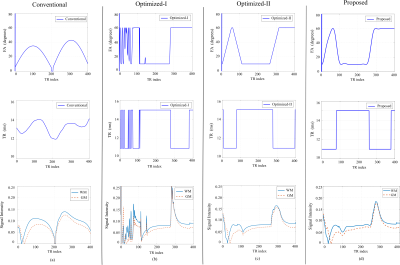Evan Scope Crafts1 and Bo Zhao1,2
1Oden Institute for Computational Engineering and Sciences, The University of Texas at Austin, Austin, TX, United States, 2Department of Biomedical Engineering, The University of Texas at Austin, Austin, TX, United States
1Oden Institute for Computational Engineering and Sciences, The University of Texas at Austin, Austin, TX, United States, 2Department of Biomedical Engineering, The University of Texas at Austin, Austin, TX, United States
We introduce a new optimal experimental design approach for magnetic resonance fingerprinting with B-splines. The proposed approach has significantly improved the computational efficiency as compared to the state-of-the-art approach, while providing similar or better SNR efficiency.

Reconstructed
T1 and T2 maps from MRF experiments using different acquisition parameters at
acquisition length N = 400. (a) Reconstructed T1 maps and relative error maps.
(b) Reconstructed T2 maps and relative error maps. Compared to the conventional
MRF experiment design, the proposed spline-based design improves the T2 accuracy by about a factor of 2, while improving T2 accuracy. It
provides a better reconstruction performance than the state-of-the-art
approach, i.e., Optimized-II, but with a two-order magnitude improvement in computation speed (as shown in Figure 2).

Data acquisition parameters and the resulting
magnetization evolutions from different MRF experiments. (a) Conventional MRF
experiment; (b) Optimized-I MRF experiment; (c) Optimized-II MRF experiment;
and (d) Proposed MRF experiment. Note that with a spline-based parametric
constraint, the magnetization evolutions from the proposed approach exhibit a
similar behavior to that from Optimized-II, but with a two-order
magnitude improvement in the computational speed (as shown in Figure 2).
